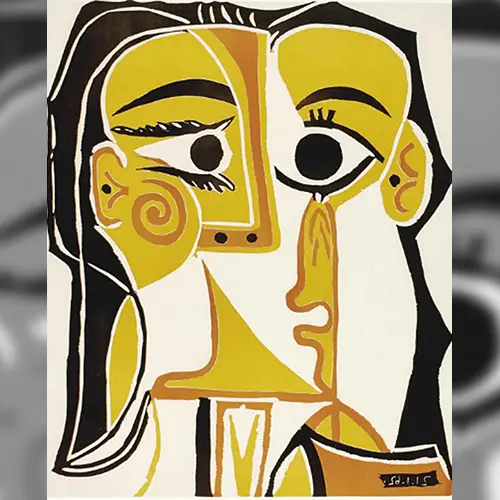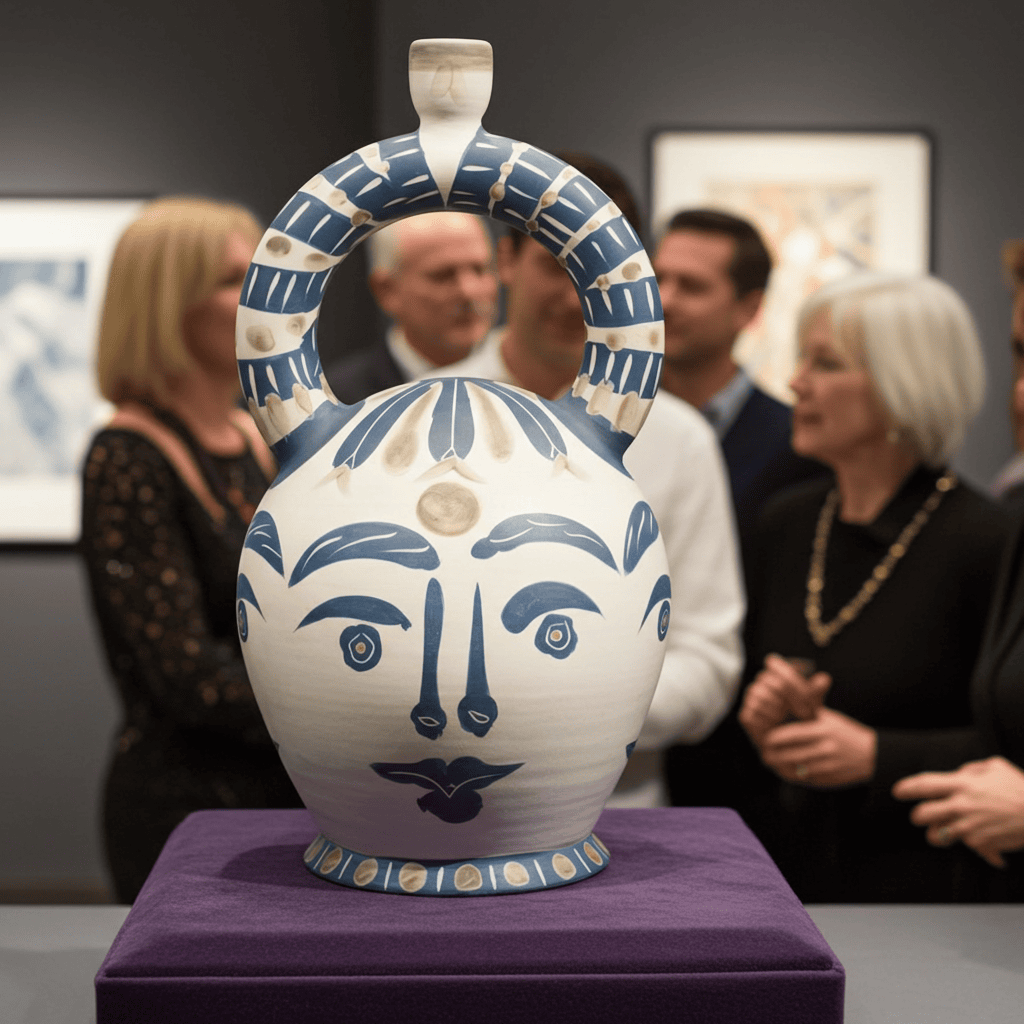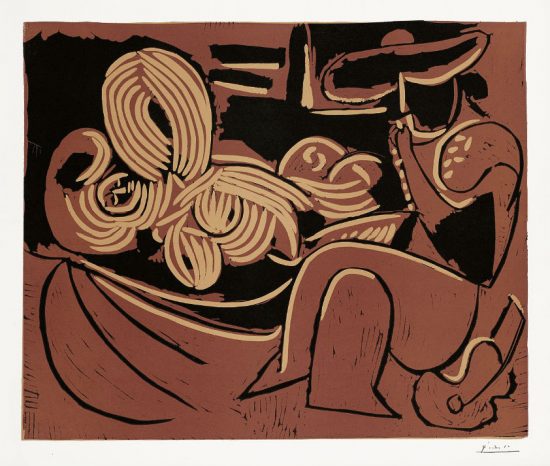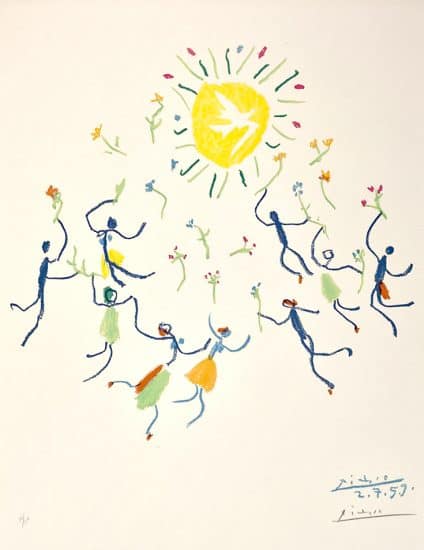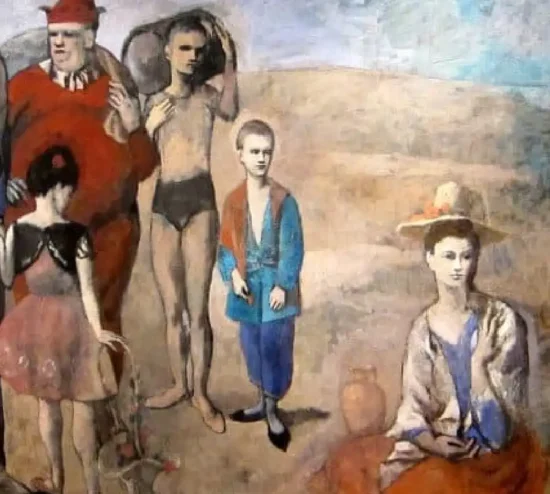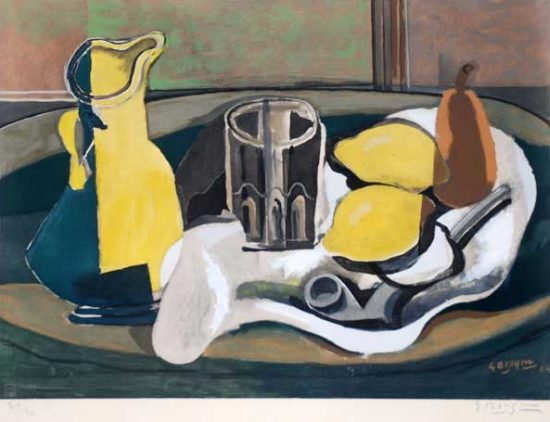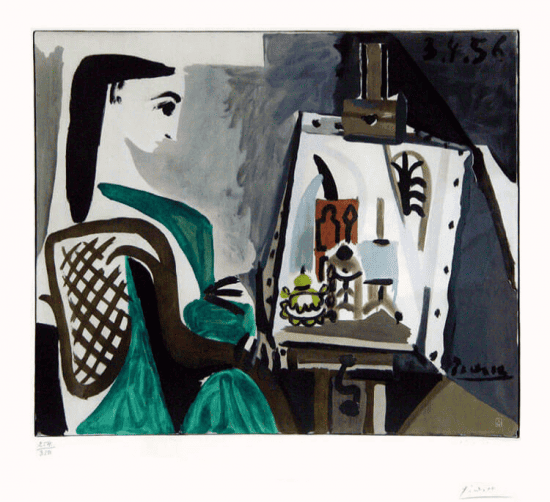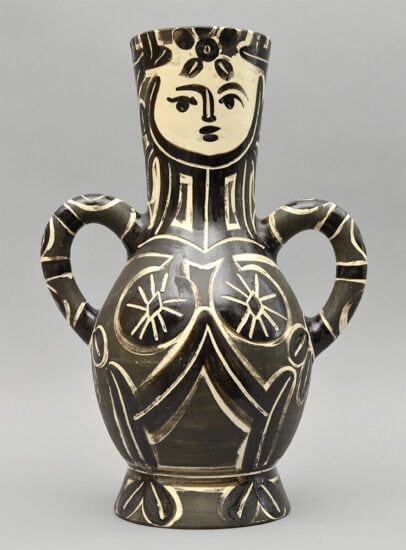The Old Guitarist was created by Pablo Picasso in 1903 while he was living in Spain during what would be later referred to as his Blue Period. This period was hallmarked by almost universal use of a monochromatic blue palette, somber and dismal subjects and an overall impoverished tone.
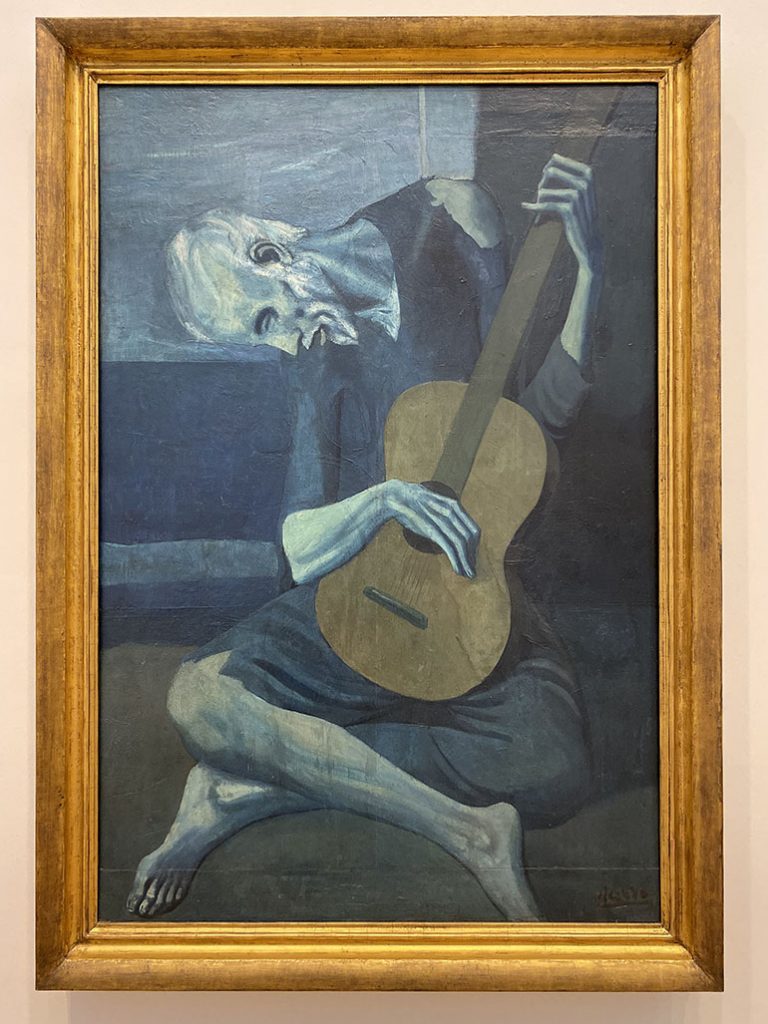
Picasso's Blue Period is said to have begun with the suicide of his friend Carlos Casagemas in 1901, but the timeline is not exact. Much has been written about The Old Guitarist, 1903* as it stands out as one of the most gut-wrenching portraits that Picasso has completed.
Pablo Picasso The Old Guitarist, 1903 is painted with the typical monochromatic blue palette, with the notable exception of the guitar, which is rendered in a warmer, brown color. This difference in coloration makes it a focal point of the piece and has led to much theorizing.
The wrought figure of the guitarist huddles and curls around his guitar, making him look cramped within the frame of the canvas. Shadows on his face and limbs make him appear gaunt, and starved. The guitar – the only point of warmth in the painting – carries the only sense of hopefulness to be found. Perhaps this guitarist can at least hold onto his form of art in a dark time. It has been said that Picasso saw himself in this guitarist, holding onto his painting during a dark time in his life.
Other influences are noticeable in The Old Guitarist, 1903. El Greco, a Spanish Old Master, is known for his elongated limbs and uncomfortably angular bodies and faces. Picasso takes inspiration from El Greco with the body of his guitarist. Others have pointed out that the eyes of the guitarist are closed, perhaps implying that he was blind. The Symbolist Movement, occurring simultaneously, often used the symbology of a blind person who had inner, divine sight. Picasso may be appropriating and using that movement in his painting.
References:
- The Art Institute of Chicago. (2013). The Old Guitarist. Retrieved from: http://www.artic.edu/aic/collections/exhibitions/Modern/artwork/28067
- The Art Institute of Chicago. (2013). Glossary. Retrieved from:
http://www.artic.edu/aic/collections/exhibitions/Modern/glossary#symbol - Pablo Picasso. The Old Guitarist, 1903 by Pablo Picasso. Retrieved from: http://www.pablopicasso.org/old-guitarist.jsp
*As an Amazon Associate I earn from qualifying purchases.

